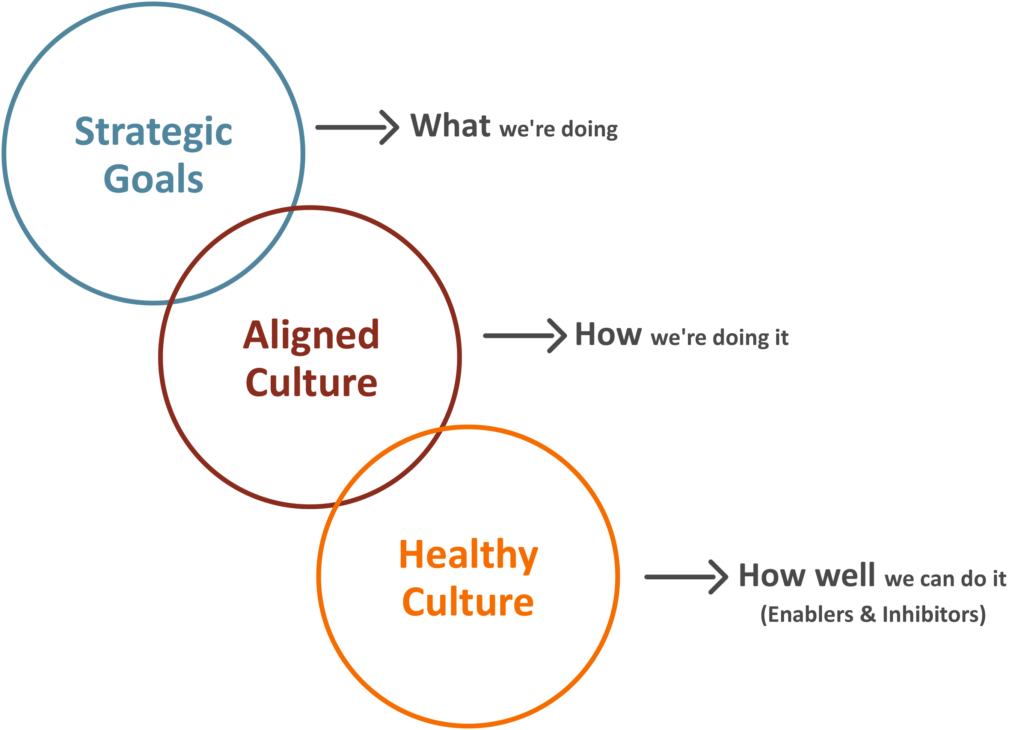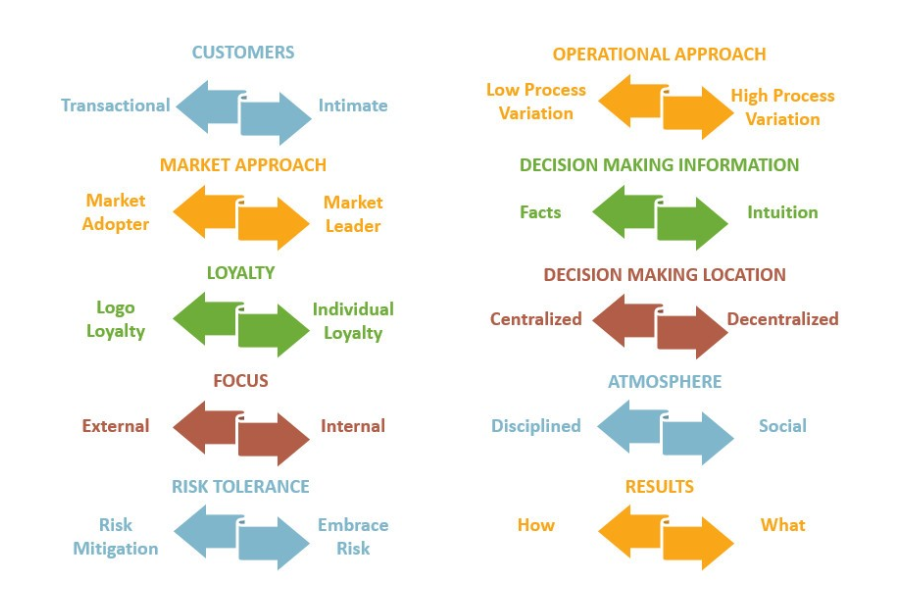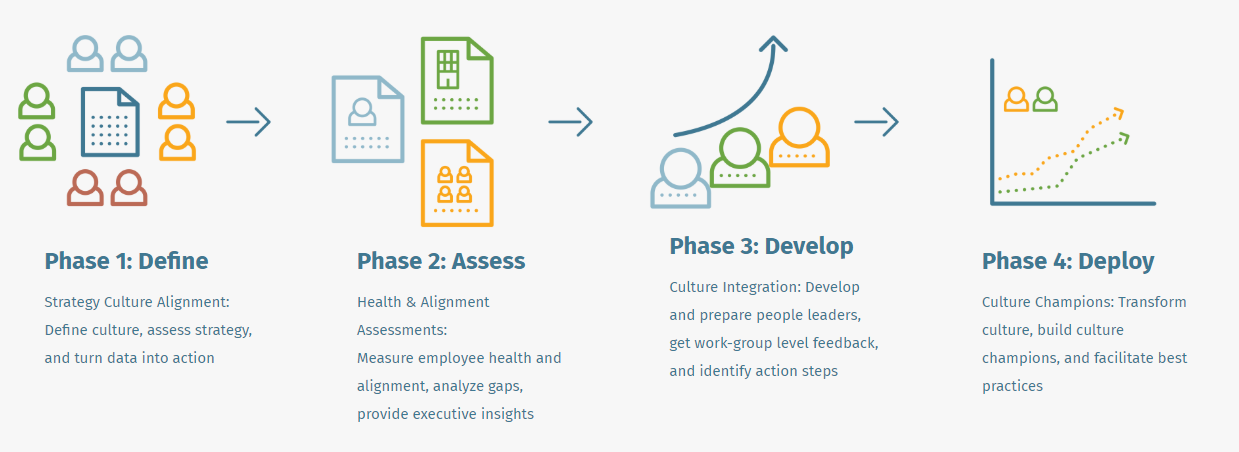
Don't Build Your Company Culture - Manage It!

If you have an interest in Organizational Development and related topics, you’ve probably noticed an uptick in articles on “How to build a great company culture in # simple steps!”. The promise is that by following those steps, you’ll make your organization’s culture as great as theirs. But there are a few flaws in that logic:
- Organizational culture is unique, and can’t be copied with a few simple steps
- Most of those articles are describing organizational health, not culture
- Culture exists and doesn’t need to be built; it just needs to be better managed
This article will dispel some common misunderstandings about culture and describe a framework and process for managing organizational culture in a purposeful way!
What Culture Is (and Is NOT)
Culture is your organization’s unique approach to how it executes strategy. If strategy is “what” you want to accomplish, then culture is “how” you do it.
For example, let’s say your organization wants to grow market share by 10%. To accomplish this, what approach to the market should your organization take? Should it be more of a market adopter, focused on improving existing offerings (like KIA)? Or should it be more of a market leader, creating brand new offerings (like Tesla)? The answer informs “how” the employees of the organization drive strategy execution. That in a nutshell is organizational culture.

- Culture is NOT about having fun. Every workplace and office should have fun, but it doesn’t make your organization unique
- Culture is NOT about values. They’re important, but every organization in a 10-mile radius shares the same common values
- Culture is NOT about engagement. Engaged employees are critical, but engagement is an aspect of organization health
The point is that none of these set your organization apart from others. Everyone wants to have fun, be value-driven, and have highly-engaged colleagues. Culture is your organization’s unique approach to “how” work gets done – it’s what makes your organization different from all others.
Culture : Don’t Built It – Manage It!
The good news is that you don’t need to build your culture – it already exists! The culture (“how”) emerged as soon as the organization had strategic goals (“what”) to pursue. The bad news is that most organizations don’t know how to measure and manage their culture in a purposeful way.
To overcome this challenge, we need a framework to better understand culture, and a process for managing it. Let’s start with the framework – this one divides organizational culture into 10 critical dimensions:

An important note here is the good-to-good nature of the scale. Being a market adopter isn’t better or worse than being a market leader. Both KIA and Tesla are extremely successful, even though they take completely different approaches to their market. The big idea is that there’s no such thing as a bad culture, but it is possible to have employees who are culturally misaligned (i.e. approach “how” they do their work in conflicting ways).
A framework provides contextual relevance and understanding across the organization, but it doesn’t tell us anything about an organization’s current or needed culture. For that, we’ll need a comprehensive process for assessing and managing the culture. This process breaks cultural alignment into 4 major phases:

- Phase 1 is a facilitated conversation with strategic decision-makers. They’re best positioned to determine “What culture is needed to attain our strategic goals?”
- Phase 2 is a survey to assesses employee perspectives on the current state of culture, and aspects of health that may help or hinder change
- Phase 3 is the pivot from assessment to management. It’s about preparing people leaders to share and act on team-level feedback
- Phase 4 is the ongoing support model. People leaders will experience obstacles, and culture champions help track their progress and provide support
Summary
The interest in organizational culture is growing rapidly, but there’s a need to clarify what culture really is and what to do about it. Be wary of trying to copy what you see other organizations do, even if their culture seems great. Culture can’t be copied in a few simple steps (sadly; it would be much easier if it could).
And remember that culture is not about fun, values, or engagement; culture is how your organization executes its strategy. It’s your unique competitive advantage, and the culture existed the moment your organization did. So you don’t need to build a culture, but a simple framework and comprehensive change process will make it easier to manage your organization’s culture in a purposeful way.
